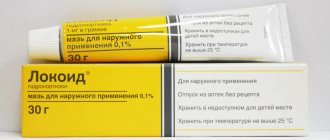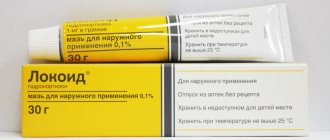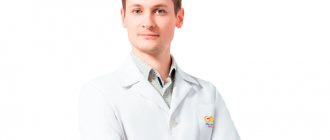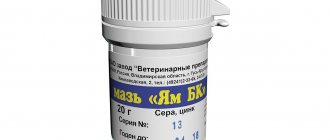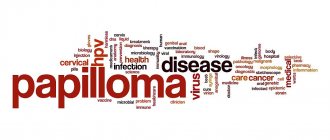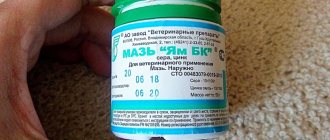Among the preparations for external use there are ointments with a wide spectrum of action. An example of such a medicine is Eplan. It is used for wounds, abrasions, bedsores, burns, herpes and many other skin diseases. It has a bactericidal, anti-inflammatory and analgesic effect. You can buy the ointment at an affordable price in almost any pharmacy.
What is Eplan?
First, let's figure out what kind of remedy this is and why it is worth our attention. Eplan is a trade name assigned to a series of products produced on the basis of a complex compound of the rare earth mineral Lantana. Exactly that Lantana, about which almost nothing was said in school chemistry lessons, and not many people remember that such an element exists in the periodic table of chemical elements.
By the way, this element with its properties interested scientists so much that for the needs of the army and not only in the 70s, a complex called Glycolan was developed and patented on the basis of Lanthanum, which was used for the prevention and protection of the respiratory tract and epidermis from toxic damage to the external environment. Namely, it was part of the individual anti-chemical package (IPCP) of the USSR Armed Forces in the 80s.
Having excellent protective and detoxifying properties, Glycolan not only did not harm, but also had a beneficial effect on the epidermis and mucous membranes, which also attracted the attention of doctors. So, based on data on use, as well as on the initiative of NPP Oberton (Now it is JSC Oberon.) Glycolan was tested in leading clinics and hospitals in the country:
- Main Military Clinical Hospital named after. N.N. Burdenko;
- Scientific Research Institute named after. N.V. Sklifosovsky;
- National Medical Research Center of Surgery named after. A.V. Vishnevsky and others.
Now this product is registered as a cosmetic product, that is, a dietary supplement. This in no way makes it worse or reduces its properties. It’s just that the procedure for legal registration of a product in this case is simpler. Many manufacturers of drugs and dietary supplements know about this and resort to this trick. So, for example, some products of the Bionorica company were initially registered as dietary supplements, and then over time they were transferred to the category of medicines after conducting appropriate tests.
Cream consistency
The drug has shown excellent results in surgical, gynecological, dermatological and otorhinolaryngological practice, including for purulent and infected lesions. The data obtained prompted us to go further, and now the Oberton company produces a drug based on Glycolan under the trade name Eplan in several forms:
- Cream;
- Liniment (or it is also called solution or liquid Eplan);
- Wipes for treating wounds;
- With urea to protect feet and hands, containing 25% urea.
INSTRUCTIONS: Antiseptic wipes, sterile “Eplan from 100 wounds”, RU MZ and SR No. ФСR2009/05127
Purpose
Antiseptic napkins, sterile “Eplan from 100 wounds” - a medical product for external use /hereinafter napkins (bandages) “Eplan from 100 wounds”.
The medical product is a two-layer medical gauze napkin measuring 16x14 cm, impregnated with a solution of the Eplan drug in individual sealed packaging. The product is sterile.
Providing first aid, treatment and treatment of wounds, burns of I, II, III degrees, abrasions, bruises, other traumatic injuries to the skin, purulent-inflammatory diseases of the skin and subcutaneous tissue of various locations and etiologies in all phases of the wound process. Effective prevention of secondary infection.
Providing medical care for combined injuries of a mechanical, thermal, chemical, radiation nature, microbial contamination. “Eplan from 100 wounds” dressings simultaneously have a pronounced antimicrobial (bactericidal, bacteriostatic), wound healing, regenerating, local anesthetic and protective effect.
Evidence base
Approbation is confirmed by approved documents - reports on randomized controlled trials conducted on the basis of: Federal State Institution Institute of Surgery named after A.V. Vishnevsky (Moscow, 2005, 19 p.), Research Institute of Emergency Medicine named after N.V. Sklifosovsky (Moscow , 2005, 15 p.); GOUVPO "Russian State Medical University" (Moscow, 2005, 17 p.); GVKG named after N.N. Burdenko of the Ministry of Defense of the Russian Federation (Moscow, 2005, 7 p.).
The given results are confirmed by medical practice of using the drug, a set of tests carried out on the basis of: GOUVPO VMA named after S.M. Kirov, (St. Petersburg); Federal State Institution “All-Russian Center for Disaster Medicine “Zashchita” (Moscow); State Central Airmobile Rescue Squad of the Ministry of Emergency Situations of Russia (Zhukovsky); /Special unit of the Ministry of Internal Affairs of Russia; Polyclinic No. 5 of the Federal Security Service of the Russian Federation; State Military Clinical Hospital named after N.N. Burdenko of the Ministry of Defense of the Russian Federation (radiological center); City Clinical Hospital No. 15; City Clinical Hospital No. 29; MONIKI; KVD No. 8; KVD No. 19/ (Moscow); Medical Radiological Research Center of the Russian Academy of Medical Sciences (Obninsk); Moscow Regional Oncology Dispensary (Balashikha); GOUVPO Moscow State Medical and Dental University; OJSC NPK Uralvagonzavod (Nizhny Tagil); enterprises: EvrazHolding LLC, Rosatom State Corporation, MOESK, etc.
Indications for use
-Providing first aid and treatment of superficial solar, thermal, chemical burns and frostbite; light, superficial bruises, wounds, cuts, abrasions, abrasions, cracks and injuries to the feet. -Treatment of wounds of various locations and etiologies in all phases of healing. -Treatment of purulent-necrotic wounds of soft tissues, incl. post-traumatic, post-operative. -Treatment of trophic ulcers, bedsores and flaccid granulating wounds.
In addition, the drug is indicated
- when providing medical care at extreme temperatures (use temperature from -40C to +50C); -in cases of intolerance to drugs (levomekol, levosin, etc.); -to relieve pain and swelling from injuries (bruises, sprains, etc.); - to relieve itching from insect bites; for skin diseases: dermatitis of various etiologies, acne vulgaris, microbial eczema, viral infections (herpes, warts, condylomas); -for aseptic treatment of skin, destruction of vegetative microorganisms, including fungi; - to protect the skin from unfavorable climatic conditions (low temperatures, wind, humidity) in order to prevent frostbite, chapping and roughening of the skin; - to protect the skin from aggressive chemical and toxic substances (acids, alkalis, fuels and lubricants, rocket fuel, etc.) and to treat skin damage resulting from contact with these substances.
Efficiency
-Reducing the time of outpatient and hospital treatment. The length of hospital stay is reduced: for purulent-necrotic wounds by an average of 5-7 days; for superficial burns of II, III degrees on average for 5-6 days compared to the use of standard traditional medications. -Reducing the time of outpatient and inpatient treatment compared to modern anti-burn drugs by 3-4 days. -Reducing the time required for recovery and return to work (to work) of victims after injuries and wounds, reducing treatment costs (see healing time above). -Reducing the time to provide assistance to victims, saving dressing material due to the compactness, simplicity and ease of use of the dressing, its good fixation on the wound surface of any configuration. - Absence of allergic reactions, side effects and complications, non-traumatic, pain and swelling relief from injuries.
Procedure for working with the product
Preparing for work
-Open the package (package) along the notch and take out a napkin; -If necessary, unfold the napkin.
Instructions for use
Externally.
-I and II degree burns, small wounds, minor wounds, superficial bruises, cuts, abrasions, abrasions, cracks and damage to the feet and other skin lesions: lubricate the affected area, and repeat the treatment periodically until complete healing.
In case of significant damage.
-Burns with an area of up to 10% at all phases of the wound process: after opening the burn blisters, removing exfoliated necrotic epidermis and treating the wounds with antiseptics (Eplan from 100 wounds napkin), an “Eplan from 100 wounds” napkin is applied to the damaged surface, and a sterile napkin is placed on top and fixed with a gauze bandage (standard dressing). -During the first days of treatment, the dressings are changed daily. In subsequent periods, depending on the condition of the wound, the dressings are changed daily or every 1 day. - Purulent-necrotic wounds, bedsores, etc. at all phases of the wound process: after treating the wound with antiseptic solutions (Eplan from 100 wounds napkin), an Eplan from 100 wounds napkin is applied to the damaged surface and fixed with a light bandage (gauze bandage, IPP1, etc.). Treatment is carried out daily or every other day, depending on the condition of the wound.
Note:
1) In the absence of antiseptics, the wound is treated with an “Eplan from 100 wounds” napkin.
2) If necessary, use (apply to the wound) several “Eplan from 100 wounds” napkins.
3) “Eplan from 100 wounds” dressings are atraumatic and do not stick to wounds when changing dressings.
-In case of chemical burns: in case of contact with vapors, aerosols, solid and liquid chemical ecotoxicants (for example, in field conditions: the poisonous hogweed plant). -If possible, wash off the toxic substance with water and blot the wound with a gauze napkin (bandage or other available material), treat the affected area with an “Eplan from 100 wounds” napkin. An “Eplan from 100 wounds” napkin is applied to the damaged surface and secured with a light bandage. Treatment is carried out daily or every other day, depending on the condition of the wound. -Protection of the skin from adverse climatic conditions; for chemical and sunburn: apply a thin layer of the “Eplan from 100 wounds” napkin to exposed skin (face, hands). - Removing swelling and itching of the skin from insect bites (mosquitoes, wasps, bees): with an “Eplan from 100 wounds” napkin, lubricate (dab) the bite site. -Sprains and inflammation of ligaments: apply an “Eplan from 100 wounds” napkin to the damaged surface and secure it with a light bandage. Change dressings daily or every other day depending on the condition of the wound. -Pustular diseases, acne vulgaris, etc.: treat the damaged surface with an “Eplan from 100 wounds” napkin. Repeat the treatment periodically until complete healing. If necessary, cut the napkin into pieces and sequentially (daily or every other day) apply them to the wound and secure with adhesive tape.
Contraindications for use
Individual intolerance to the components of the drug.
Storage conditions
Do not require special storage conditions. Shelf life: 5 years.
, JSC "OBERON", 111024, Russia, Moscow, Entuziastov highway, no. 56.
Release form
To understand the principle of action, as well as the effects, let's take a closer look at the composition of each form of the drug.
Eplan cream
So, the cream contains per 100 g of the finished drug:
- 7.2 g of the main component Glycolan, i.e. is 7.2%;
- Polyethylene glycol (cream formulator, prolongator, forms a protective film on the surface of the epidermis);
- Triethylene glycol (solvent, disinfectant and viscosity reducer);
- Ethylcarbitol (solvent, bactericidal substance that causes the death of microorganisms on the surface and in the upper layers of the skin);
- Glycerin (softening agent, has an antiseptic effect);
- Water.
Composition of the cream
It is this complementary combination that allows this product to have a pronounced therapeutic effect.
Cream with box
The cream is produced in aluminum tubes of 30 grams, placed in a cardboard box along with instructions.
Eplan liniment
Eplan liniment (also known as Eplan drops) contains per 100 g:
- Triethylene glycol;
- Ethylcarbitol;
- 8.5 g of the main component Glycolan (the concentration is higher than in the cream, which is due to the liquid form of release);
- Glycerol;
- Water.
Liniment composition
Available in dark 20 ml dropper bottles, placed in a cardboard box along with instructions.
Photo of bottle and box
Eplan 25% urea
This product is intended for the care of the skin of the feet and hands and has the following composition:
- Triethylene glycol;
- Urea (keratolytic, powerful softening agent);
- Ethoxydiglycol (solvent and conductor, promotes uniform distribution of the components of the mixture, as well as delivery of active ingredients to the deep layers of the epidermis);
- Glycolan;
- Glycerol;
- Lactic acid (emollient, softener, has antiseptic properties, helps exfoliate dead dermis and is involved in its renewal);
- Panthenol (vitamin-like healing, regenerating substance);
- Perfume (fragrance).
Available in 30 ml bottles, placed in a cardboard box along with an insert.
Eplan 25% urea
This cosmetic product is a completely non-aqueous solution, which means it is practically not susceptible to contamination by microorganisms and is suitable for treating the hands of personnel, exhibiting good antiseptic and protective properties.
The solution has:
- High softening and healing ability;
- Indicated for hyperkeratosis;
- Keratitis and dermatitis accompanied by keratosis;
- Corns and calluses.
It is a protective means of choice and personal hygiene for cashiers, bank workers and all those professions whose activities involve the contact of large quantities of money, as well as builders, road workers, car mechanics and people whose hands are often exposed to the cold without gloves.
So, when thinking about how to protect your hands at work, remember first of all about Eplan with urea.
INTRODUCTION
Surgical skin and soft tissue infections (SSTIs) are the most common reason for patients visiting a surgical hospital or clinic [1]. In 2004, in France, Germany, Italy, Spain, and Great Britain, 1.3 million patients were hospitalized for SSTIs, including cellulitis (52.7%), local surgical infection (15.8%), and diabetic foot ( 15.3%), bedsores (12%) [2]. According to expert estimates, in Russia SSTIs range from 480 to 700 thousand patients per year [3, 4].
As statistics showed in the 90s, about 12 million people were registered in Russia with bruises, wounds, crushes, up to 3 million with fractures, 1.5 million with thermal injuries. Every year, up to 1.5 million patients with trophic ulcers and about 500 thousand patients with diabetic foot syndrome turn to medical institutions for help. Up to 30% of patients with surgical pathology require specialized care for developed purulent-inflammatory processes.
Undoubtedly, nowadays, taking into account the increase in man-made, natural, road accidents and local military conflicts, the number of patients with purulent-inflammatory diseases has increased significantly. At the same time, local infectious complications in victims with polytraumas reach 34.4%, generalization of the infectious process – 5.5% [5].
When analyzing the frequency of postoperative complications in 16 surgical hospitals in Russia, it was revealed that the development of complications in the postoperative period leads to an increase in hospitalization time from 10.5 to 17.4 days during emergency operations, from 16.9 to 33.6 days during planned operations , from 13.6 to 22.8 days – in the group of patients who underwent abdominal surgery [6]. An increase in the length of hospital stay by 10 days leads to economic damage and an increase in treatment costs in European countries by an average of 2 thousand euros per patient [7].
From an etiological point of view, SSTIs are usually bacterial and in many cases polymicrobial. The most common causative agent of infection is S. Aureus
. Of particular concern is the recent widespread spread of oxacillin/methicillin-resistant staphylococci (MRSA), characterized by resistance to beta-lactam drugs and often to aminoglycosides, lincosamides, and fluoroquinolones.
Enterobacteriaceae family are widespread in medical institutions.
– producers of extended spectrum beta-lactamases (
Klebsiella
spp.,
Enterobacter
spp.,
E. Coli
), which are resistant to cephalosporins of II–IV generations [8].
When choosing antimicrobial chemotherapy, a differentiated approach to the selection of drugs is extremely important, depending on the level of soft tissue damage, the characteristics of the clinical course of the disease, and increasing multidrug resistance must also be taken into account [9].
Even with adequate systemic antibacterial therapy, mortality in generalized SSTIs can reach 50% or more (with necrotic infections) [10–12]. The high frequency of generalization of the infectious process observed in recent years, even with local forms of SSTI, is due to the rapid increase in resistance not only to the most common systemic antibacterial agents in hospitals, but also to traditional drugs used for local treatment.
We must constantly remember that any wound, regardless of its location and the cause of its appearance, always initially contains a different number of microorganisms (primary microbial contamination). The main purpose of any primary dressing used at home, by emergency or military service doctors, outpatient or inpatient doctors, is to stop bleeding and prevent wound infection or maximize the destruction of microorganisms that have accidentally entered the wound. Subsequently, treatment of any wound is carried out in accordance with the phase of the wound process and the species composition of microbes growing in it.
In the last two decades, in the treatment of purulent-inflammatory processes, purulent wounds of various locations and origins, solutions of new antiseptics (1% iodopirone; 0.01% miramistin; 1%, 0.5% dioxidin; 0.1; 0.2% Lavacept). Ineffective lanolin-vaseline-based ointments (Vishnevsky ointment, ichthyol ointment, streptocidal ointment, erythromycin ointment, tetracycline ointment, furacilin ointment, etc.) have been almost completely replaced from the practice of treating patients with SSTIs. These drugs were replaced by polyethylene glycol (PEG)-based ointments (levosin, levomekol, dioxykol, 5% dioxidine ointment, stellanin-PEG 3%, oflomelid, baneocin, etc.). Preparations containing polyhexanide (prontosan solution, gel) show high efficiency in the treatment of chronic foci of infection complicated by microbial biofilms [13–18]. However, we have to admit that for various reasons (usually beyond the wishes of practitioners), these drugs are supplied to hospitals, emergency rooms and clinics in negligible quantities.
Also, in recent years, we have to observe with regret how our domestic pharmaceutical industry has unreasonably reduced or completely stopped the production of domestic medicines, dressings for the treatment of wounds, which have no analogues abroad, but have confirmed their high effectiveness in helping the wounded in Afghanistan, Arzamas, Ufa, Spitak and other mass casualties of the population (explosions of houses in Moscow, in the metro, etc.). For example, the production of most PEG-based ointments has almost completely ceased. Of the large number of these drugs, only levomekol and 5% dioxidine ointment remained. Foaming aerosols (dioxysol, gentazol, nitazol) are no longer produced. Hydrocolloids (galagran, galactone) have disappeared from pharmacies, collagen-based wound coverings with gentamicin (gentacycol), etc. are no longer available. Of course, some things are being actively introduced into our practice by various foreign pharmaceutical companies. But their developments are extremely expensive and are not always designed for the specifics of our medical institutions.
In the last 5–7 years, several new domestic drugs have been proposed for the treatment of various wounds: fusimet ointment, streptolaven ointment, stellanin-PEG ointment 3%, oflomelid ointment. But the process of introducing these drugs into practical healthcare is still hampered by the lack of support from the governing structures of the Russian Ministry of Health.
In the early 2000s, the research and production enterprise Oberon CJSC (Russia), VPK, based on glycolan, developed and registered:
Eplanol solution 8.5% containing: glycolan, triethylene glycol, ethylcarbitol, glycerin, sodium hydroxide, water (GOST R 51 379–2000);
Eplanol ointment 6.8% , containing: glycolan, triethylene glycol, ethylcarbitol, glycerin, sodium hydroxide, polyethylene oxide-400 (GOST R 52 343–2005).
Extensive experimental studies on animals have shown that these new drugs have simultaneously analgesic, wound-healing, antimicrobial and antitumor activity [19–24]. The antimicrobial effect of the drugs is due to the presence of glycolan in their composition (a complex compound of lanthanum nitrate and triethylene glycol - La(NO3)3С6Н14О4 n
H2O).
Lanthanum is one of the representatives of the family of rare earth metals (lanthanides), necessary for the normal functioning of the body. Lanthanides are capable of forming complexes with carbohydrates, amino acids, hydroxy acids, nucleotides, phosphatides, and vitamins. They influence various stages of the blood coagulation process: they inhibit thrombin synthesis, act as Ca2+ antimetabolites, displacing it from systems with one or more protein coagulation factors; through mast cells, they increase the level of free heparin in the blood when administered in sufficiently large doses, and are capable of increasing the phagocytic activity of blood leukocytes [25, 26].
Almost half of the radioactive isotopes used in oncological treatment of tumors are lanthanides. Recently, antitumor activity has also been discovered in stable isotopes of lanthanides. Lanthanides can accumulate in tumors in large quantities and disrupt the metabolism of calcium, magnesium, and phosphorus in them.
Lanthanum ions have a high affinity for phospholipids and “stabilize” cell membranes, blocking ion cells; this effect of lanthanides on the site of inflammation is similar to the effect of corticosteroids.
However, large-scale clinical and laboratory studies of these drugs for the treatment of SSTI have not been conducted. In this connection, the materials presented in this article seem extremely relevant.
Table 1.
Antimicrobial activity of the drug Eplan - solution and ointment and Levomekol ointment (zones of inhibition of the growth of microorganisms in mm).
Note.
The absence of growth inhibition zones around the socket, as well as a growth inhibition zone of up to 10 mm, were considered as lack of sensitivity to the drug; zones of growth retardation with a diameter of 11–15 mm were considered to be of low sensitivity; zones of growth inhibition with a diameter of 15–25 mm were considered to indicate high sensitivity.
How does Eplan work?
The rare earth metal Lanthanum has a high ability to form complexes with organic substances, including biologically active substances in our body:
- Amino acids;
- Carbohydrates and carbohydrate parts of glycoproteins;
- Nucleic acids;
- Phospholipids, etc.
This is of great importance - lanthanum is able to displace other metals, such as copper, cobalt, calcium, magnesium, manganese and zinc from such compounds and influence the biological activity of these substances.
For example, due to the similarity of the radii of Lanthanum and Calcium ions, Lanthanum can displace the latter from binding with proteins, thus disrupting the functioning of the blood coagulation system and acting as an anticoagulant.
For this reason, it is not advisable to use this drug to stop bleeding and on bleeding wounds!
Another practical significance is that the use of this product prevents calcification of the skin. We all know what hard water is and how negatively it affects the condition of the skin and hair.
Often, many women experience a feeling of sand on the scalp, dryness and flaking, and as a result, hair loss. All this is the result of the sedimentation of calcium compounds in the scalp. On the face and body this is manifested by areas of dryness and flaking, “goose bumps”, and scaliness. Calcium binds to the phospholipids of our epidermis and interferes with natural biological processes. Therefore, the use of Eplan for this problem can significantly improve the situation, especially with chronic skin diseases such as rosacea, dry and oily seborrhea with peeling areas, eczema, dermatitis, acne and acne.
The cream is not comedogenic, literally at all, because it does not contain saturated fats. On the contrary, it helps to narrow pores. At first the cream feels greasy and oily to the touch, but after a while it is perfectly absorbed.
Glycolan exhibits a variety of beneficial effects, namely:
- Detoxifying (removes heavy metals from the body and prevents them from entering the body);
- Stimulates the body's protective functions, regeneration and repair;
- Has a dermatotropic and dermatoprotective effect;
- Participates in the suppression of antimicrobial activity.
In addition, auxiliary components have the following effects:
- Bactericidal and disinfecting effect on the epidermis;
- Soften the skin;
- Promote the penetration of the main and auxiliary substances deep into the skin;
- Create a protective film on the surface of the dermis;
- Has an analgesic and antipruritic effect.
Eplan ointment: description, composition
"Eplan" is a drug characterized by analgesic, bactericidal, and wound-healing effects. Also promotes tissue restoration after damage. Available in the form of cream and solution. The composition includes the active substance (glycolan) and auxiliary components (water, glycerin, polyethylene glycol and others).
Belongs to the class of dermatotropic drugs, used only externally. Antiseptic, inhibits the activity of pathogenic bacteria, and also counteracts inflammatory processes. In addition, the glycerin contained in the ointment softens the tissues and stimulates their healing.
The drug affects all tissues of the skin, eliminates itching and pain. At the same time, healing occurs at a faster rate, tissues do not die, which allows the skin to remain attractive.
Indications for use
The use of Eplan ointment, as well as the solution, is recommended for the following indications:
- Pustular skin lesions (pyoderma);
- Acne on the face and body;
- Folliculitis and ingrown hairs;
- Acne;
- Rosacea, including complicated;
- Acne vulgaris;
- Boils;
- Burns and traumatic damage to the epiermis;
- Fungal skin infections;
- Viral skin lesions (herpes, candilomas, papillomas, warts);
- Relieving swelling and itching, including insect bites;
- Trophic ulcers and bedsores;
- Psoriasis and eczema;
- Protection of the dermis from aggressive environments.
The use of liquid Eplan is complemented by use on mucous membranes:
- diseases of the nasal mucosa;
- inflammation of the ear canal;
- Can be used for stomatitis.
It must be remembered that even though this drug is a cosmetic product, before using it, it is best to consult a dermatogol or cosmetologist.
Contraindications
Just like any medicine or cosmetic product, this product has contraindications and side effects, but they are too few compared to the positive effects.
There is only one contraindication - hypersensitivity to the components of the drug.
Eplan can be used by children from an early age, as the manufacturer assures, but we strongly recommend consulting with a pediatrician. Also, the drug can be used topically for pregnant and lactating women with caution and according to indications, and of course after consultation with your doctor.
Methods of using Eplan cream
Let's figure out how you can use eplan cream in everyday life.
For acne
For inflammation, Eplan is applied to clean, dry skin directly to the site of inflammation at least 2 times a day. After application, do not wet the area, but if you get caught in the rain or sweat in the gym, you must clean the skin and repeat application.
When fighting acne, the cream or solution must be applied under the bandage in the form of applications. Ideally, leave it overnight. For extensive inflammation on the face, you can also use napkins in the form of applications.
Cost of the drug
The price of Eplan ointment varies from 150 to 250 rubles per tube.
The solution can be bought for 160-200 rubles.
A solution with urea costs from 190 to 230 rubles per bottle.
Napkins can be purchased for 210 rubles; this is the rarest product on this list.
As you can see, this product is very affordable, unlike many products used for the same indications in dermatology and beyond.
special instructions
"Epalan" can be used at any stage of pregnancy, as well as during breastfeeding. It is non-toxic and does not pose a health threat, so it can be used without first consulting a doctor. The only exception is the possible manifestation of allergic reactions due to individual intolerance.
The ointment does not leave greasy marks on clothes, so it can be used to treat different areas. Moreover, due to the presence of glycerin, hands may be “greasy” after treatment. Therefore, it is better to do the procedure at home, before starting work.
